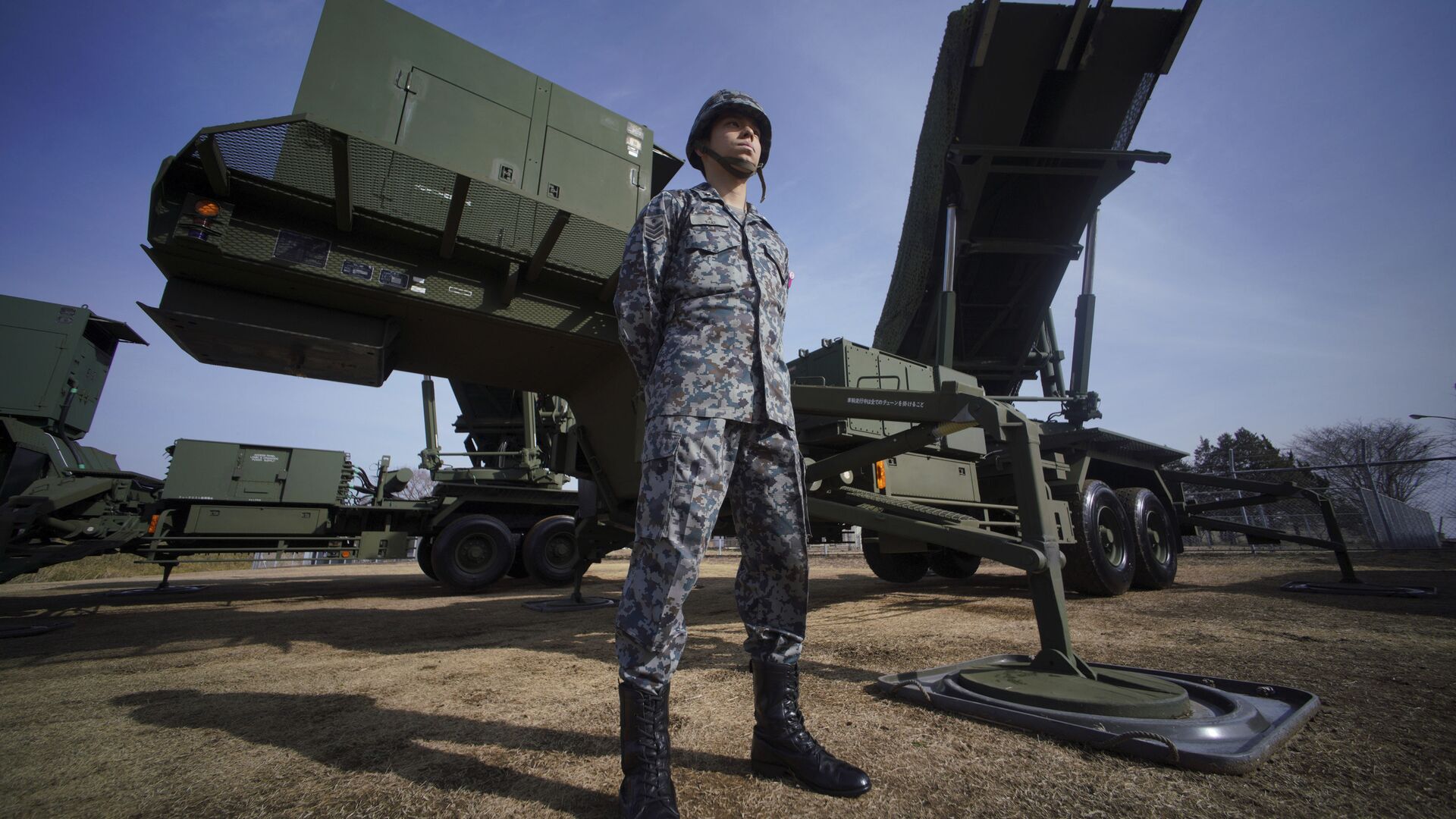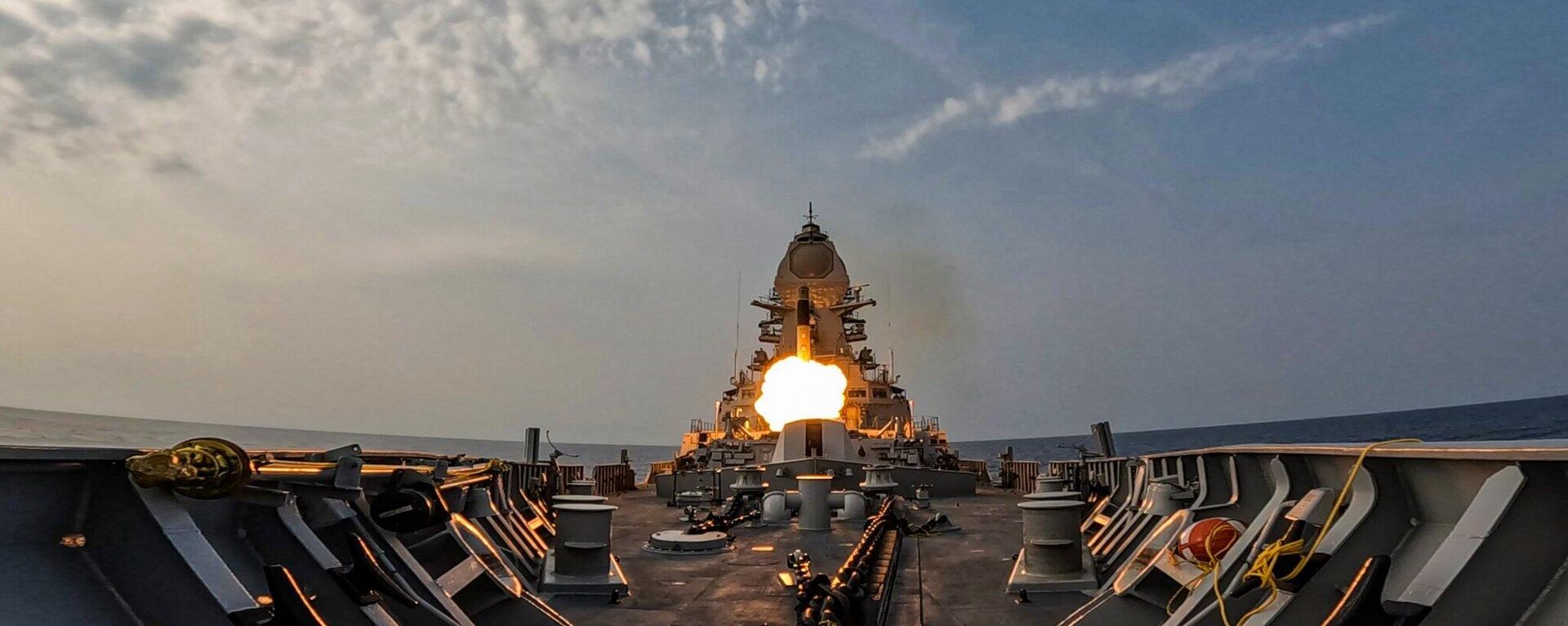https://sputniknews.in/20230613/japan-defense-buildup-whats-behind-tokyos-military-expansion-2464529.html
Japan Defense Buildup: What's Behind Tokyo's Military Expansion?
Japan Defense Buildup: What's Behind Tokyo's Military Expansion?
Sputnik India
The Japanese Defense Ministry recently assigned Kawasaki Heavy Industries (KHI) the task of developing a new surface-to-ship guided cruise missile over the... 13.06.2023, Sputnik India
2023-06-13T18:08+0530
2023-06-13T18:08+0530
2023-06-13T18:09+0530
sea of japan
japan
aukus
kuril islands
china
russia
indo-pacific
military build-up
us
us navy
https://cdn1.img.sputniknews.in/img/07e7/06/0d/2467664_0:150:3000:1838_1920x0_80_0_0_5a40d9064530562208366f0ab96eb7b5.jpg
The missile development is part of Japan's broader strategy to bolster the nation's military capabilities under the broad 'Defense Buildup Program' announced in December 2022. This comprehensive program includes several projects, such as the development of hypersonic weapons, and the creation of a new surface-to-ship guided cruise missile, with the latter garnering considerable attention.Sputnik looks into Japan's defense buildup program, its pacifist constitution, and the geopolitical factors driving these changes, especially the impact of the US-led regional alliances, such as AUKUS, comprising the United States, the United Kingdom, and Australia.The New Anti-Ship Cruise Missile ProjectA new surface-to-ship guided cruise missile to be manufactured by Kawasaki Heavy Industries (KHI) over the next four years will have a modular design, allowing for various configurations to suit different mission requirements, such as land attack, electronic warfare, and reconnaissance. Guiding Systems and Launch CapabilitiesHypersonic Weapons DevelopmentAnother critical aspect of Japan's Defense Buildup Program is the development of hypersonic weapons. These high-speed, maneuverable systems have the potential to significantly alter the balance of power in the Asia Pacific region. Japan's investment in hypersonic technology reflects its commitment to staying ahead in the global arms race, particularly with nations like China, Russia, and the Democratic People's Republic of Korea (DPRK) -- who already possess advanced hypersonic capabilities.Record Military SpendingIn addition to the development of the new anti-ship cruise missile and hypersonic weapons, Japan has prioritized the expansion of its naval capabilities. This includes investments in aircraft carriers, such as the Izumo class JS Kaga (DDH-184), which demonstrates Tokyo's focus on enhancing its maritime power projection.As a result, Japan's military budget for the fiscal year 2023 reached a record 1.42 trillion yen ($10.2 billion), with $257 million allocated specifically to research the new anti-ship missile. This increased spending signifies Japan's determination to strengthen its military prowess and ensure its security amid growing regional tensions.Japan's Pacifist Constitution: A Delicate BalanceOne of the most notable aspects of Japan's military expansion is the delicate balance it must maintain with its pacifist constitution. Article 9 of the Japanese constitution prohibits the nation from engaging in offensive military actions, so the government must frame its military buildup as a matter of self-defense. Critics argue that Japan is gradually abandoning its post-WW2 pacifist defense strategy, raising concerns about the potential for regional destabilization.What's Driving Japan's Military Expansion?Several geopolitical factors are driving Japan's military buildup, including regional tensions, such as North Korea's nuclear program and China's growing influence in the region, which the Biden administration has openly designated as a threat in its official documents.US media have suggested that Japan's hypersonic missiles could be potentially used against China or Russia, with whom Tokyo has been engaged in territorial disputes. The Drive noted that Japan has "a particular stake" in "protecting" the territories within the First Island Chain - which comprises the Kuril Islands, the Japanese archipelago, the Ryukyu (Nansei) Islands, Taiwan, northwestern Philippines (Luzon, Mindoro and Palawan) and ending at Borneo.It's worth noting that Japan's military buildup comes at a time when Washington is also beefing up its military presence in the Asia-Pacific, including through the tripartite AUKUS alliance. The AUKUS pact claims to strengthen military cooperation in the region, though it was, in the first place, designed to deter potential adversaries like China and Russia. The US Indo-Pacific Command has explicitly stated that the ongoing developments are intended for deterrence purposes.
https://sputniknews.in/20230523/indias-new-missile-destroyer-successfully-engages-supersonic-target-at-sea-2112902.html
https://sputniknews.in/20230315/aukus-australian-pm-under-fire-for-choosing-us-and-uk-over-security-interests-1170925.html
sea of japan
japan
kuril islands
china
russia
indo-pacific
us
Sputnik India
feedback.hindi@sputniknews.com
+74956456601
MIA „Rossiya Segodnya“
2023
Sputnik India
feedback.hindi@sputniknews.com
+74956456601
MIA „Rossiya Segodnya“
News
en_IN
Sputnik India
feedback.hindi@sputniknews.com
+74956456601
MIA „Rossiya Segodnya“
Sputnik India
feedback.hindi@sputniknews.com
+74956456601
MIA „Rossiya Segodnya“
japan's surface-to-ship guided cruise missile, japan military buildup, japan defense buildup program, japanese military budget, japanese pacifist constitution, japan first island chain, japan hypersonic weapons, aukus, us pacific command, asia pacific, pivot to asia,
japan's surface-to-ship guided cruise missile, japan military buildup, japan defense buildup program, japanese military budget, japanese pacifist constitution, japan first island chain, japan hypersonic weapons, aukus, us pacific command, asia pacific, pivot to asia,
Japan Defense Buildup: What's Behind Tokyo's Military Expansion?
18:08 13.06.2023 (Updated: 18:09 13.06.2023) The Japanese Defense Ministry recently assigned Kawasaki Heavy Industries (KHI) the task of developing a new surface-to-ship guided cruise missile over the next four years.
The missile development is part of Japan's broader strategy to bolster the nation's military capabilities under the broad 'Defense Buildup Program' announced in December 2022.
This comprehensive program includes several projects, such as the development of hypersonic weapons, and the creation of a new surface-to-ship guided cruise missile, with the latter garnering considerable attention.
Sputnik looks into Japan's defense buildup program, its pacifist constitution, and the geopolitical factors driving these changes, especially the impact of the US-led regional alliances, such as AUKUS, comprising the United States, the United Kingdom, and Australia. The New Anti-Ship Cruise Missile Project
A new surface-to-ship guided cruise missile to be manufactured by Kawasaki Heavy Industries (KHI) over the next four years will have a modular design, allowing for various configurations to suit different mission requirements, such as land attack, electronic warfare, and reconnaissance.
Guiding Systems and Launch Capabilities
The weapon is expected to have a range of 2,000 kilometers and a subsonic speed of Mach 0.8 (980.04 km/h).
The missile will be guided by an inertial navigation system (INS) and a Global Positioning System (GPS) during its cruise phase.
In the terminal phase, it will use an infrared (IR) and/or a radio frequency (RF) seeker -- this combination of infrared and radar seekers will make the missile less vulnerable to jamming.
The missile can be launched from various platforms, such as warships, aircraft, land-based launchers, and submarines.
Hypersonic Weapons Development
Another critical aspect of Japan's Defense Buildup Program is the development of
hypersonic weapons.
These high-speed, maneuverable systems have the potential to significantly alter the balance of power in the Asia Pacific region.
Japan's investment in hypersonic technology reflects its commitment to staying ahead in the global arms race, particularly with nations like China, Russia, and the Democratic People's Republic of Korea (DPRK) -- who already possess advanced hypersonic capabilities.
In addition to the development of the new anti-ship cruise missile and hypersonic weapons, Japan has prioritized the expansion of its naval capabilities. This includes investments in aircraft carriers, such as the Izumo class JS Kaga (DDH-184), which demonstrates Tokyo's focus on enhancing its maritime power projection.
As a result, Japan's military budget for the fiscal year 2023 reached a record 1.42 trillion yen ($10.2 billion), with $257 million allocated specifically to research the new anti-ship missile. This increased spending signifies Japan's determination to strengthen its military prowess and ensure its security amid growing regional tensions.
Japan's Pacifist Constitution: A Delicate Balance
One of the most notable aspects of Japan's military expansion is the delicate balance it must maintain with its pacifist constitution.
Article 9 of the Japanese constitution prohibits the nation from engaging in offensive military actions, so the government must frame its military buildup as a matter of self-defense. Critics argue that Japan is gradually abandoning its post-WW2 pacifist defense strategy, raising concerns about the potential for regional destabilization.
What's Driving Japan's Military Expansion?
Several geopolitical factors are driving Japan's military buildup, including regional tensions, such as North Korea's nuclear program and
China's growing influence in the region, which the Biden administration has openly designated as a threat in its official documents.
US media have suggested that Japan's hypersonic missiles could be potentially used against China or Russia, with whom Tokyo has been engaged in territorial disputes. The Drive noted that Japan has "a particular stake" in "protecting" the territories within
the First Island Chain - which comprises the
Kuril Islands, the Japanese archipelago, the Ryukyu (Nansei) Islands, Taiwan, northwestern Philippines (Luzon, Mindoro and Palawan) and ending at Borneo.
It's worth noting that Japan's military buildup comes at a time when Washington is also beefing up its military presence in the Asia-Pacific, including through the tripartite AUKUS alliance.
The AUKUS pact claims to strengthen military cooperation in the region, though it was, in the first place, designed to
deter potential adversaries like China and Russia. The US Indo-Pacific Command has explicitly stated that the ongoing developments are intended for deterrence purposes.



